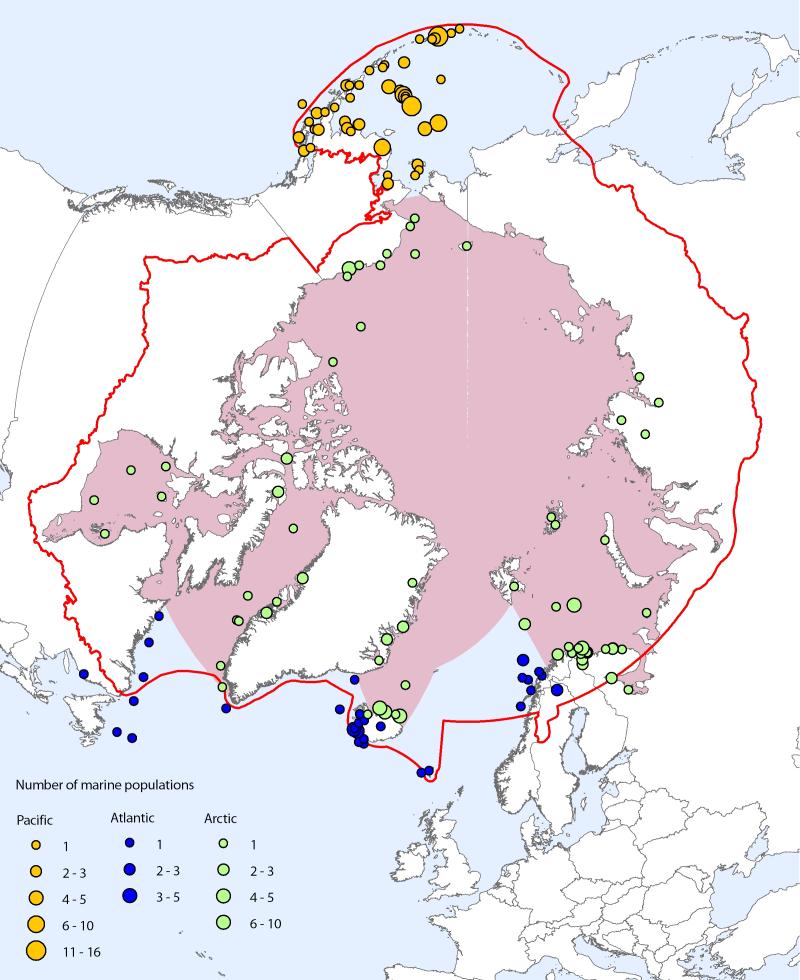Arctic Species Trend Index
Type of resources
Available actions
Keywords
Contact for the resource
Provided by
Representation types
Update frequencies
status
-

<img src="http://geo.abds.is/geonetwork/srv/eng//resources.get?uuid=59d822e4-56ce-453c-b98d-40207a2e9eec&fname=cbmp_small.png" alt="logo" height="67px" align="left" hspace="10px">This index is part of CAFFs Arctic Species Trend Index (ASTI) which is an index that tracks trends in over 300 Arctic vertebrate species and comprises the Arctic component of the Living Planet Index. The ASTI describes overall trends across species, taxonomy, ecosystems, regions and other categories. This Arctic Migratory Birds Index describes the broad-scale trends necessary for designing and targeting informed conservation strategies at the flyway level to address these reported declines. To do this, it examines abundance change in selected Arctic breeding bird species, incorporating information from both inside and outside the Arctic to capture possible influences at different points during a species’ annual cycle. - <a href="http://caff.is" target="_blank"> Arctic Migratory Birds Index 2015</a>
-

<img src="http://geo.abds.is/geonetwork/srv/eng//resources.get?uuid=59d822e4-56ce-453c-b98d-40207a2e9eec&fname=cbmp_small.png" alt="logo" height="67px" align="left" hspace="10px"> The Arctic marine data set contains a total of 111 species and 310 population time series from 170 locations. Species coverage is about 34% of Arctic marine vertebrate species (100% of mammals, 53% of birds, and 27% of fishes) (Bluhm et al. 2011). At the species level, even though the representation of Arctic fish species is lower than that of mammals and birds, the data are dominated by fishes, primarily from the Pacific Ocean (especially the Bering Sea and Aleutian Islands). However, there are more population time series in total for bird species, which is reflective of this group being both better studied historically and also monitored at many small study sites compared to fish and marine mammal species, which are regularly monitored at a much larger scale through stock management. Note that the time span selected for marine analyses is 1970 to 2005 (compared with 1970 to 2007 for the ASTI for all species). CAFF Assessment Series No. 7 April 2012 - <a href=http://caff.is/asti/asti-publications/28-arctic-species-trend-index-tracking-trends-in-arctic-marine-populations" target="_blank"> The Arctic Species Trend Index - Tracking trends in Arctic marine populations </a>
 CAFF - Arctic Biodiversity Data Service (ABDS)
CAFF - Arctic Biodiversity Data Service (ABDS)